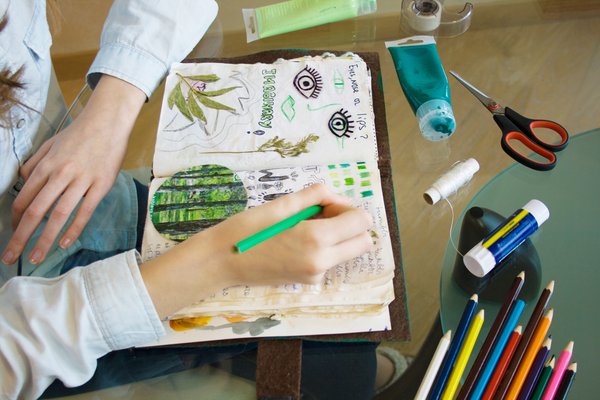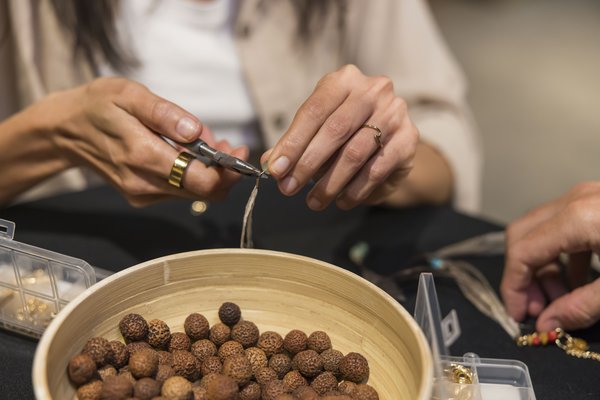Making land work?
Two pieces of sandalwood from Vanuatu provide a key for understanding the cultural ties between indigenous people and their land.
These two short branches of seemingly ordinary wood seem out of place in the Australian Museum’s cultural stores, surrounded by shelves filled with all manner of cultural artworks and artefacts. Yet they reveal much about the history of conflict between Western and traditional indigenous attitudes towards land and natural resources – conflict that continues in various guises today.

© Australian Museum
Incense
Heavy and fine-grained, but having now lost their wonderful fragrance, these pieces of sandalwood, Santalum austrocaledonicum, were collected from the island of Erromango, Vanuatu in the early 1900s by missionary Rev Dr HA Robertson.
Sandalwood, widely used in furniture and incense across Asia, was much in demand in the nineteenth century. Enormous profits could be made from selling sandalwood to China, and Erromango was a rare source of a particularly sought-after, fragrant variety. Western traders were initially content to offer modest payments for cutting this valuable resource. But from 1829 to 1865 Erromango and its peoples were increasingly exploited to enable foreigners to extract maximum sandalwood at minimal cost.
From the late 1880s, foreign companies based in Nouméa and Melbourne moved in, laying claim to vast areas of the New Hebrides (Vanuatu). Such a situation was completely incomprehensible to the indigenous inhabitants and traditional custodians of these lands – ni-Vanuatu. Combined with the introduction of European diseases, alcohol, firearms and the early ravages of ‘blackbirding’ (labour recruiting), the population of Erromango fell from an estimated pre-contact level of over 10,000 to less than 400 by 1921. Over the same period the whole of Vanuatu suffered a similar, catastrophic population decline from possibly 700,000 to around 40,000 by the late 1920s.
It was a story repeated over much of coastal Melanesia and one might thus say that, for many Melanesians, the early ‘benefits of contact with Western civilisation’ were extremely doubtful.
Traditional land rights
In Western economic systems, land has always been a commodity – something to be bought, sold . . . or usurped. Land with no written ‘title’ or in an ‘unused’ natural state is essentially considered uninhabited no-man’s land, terra nullius or free for the taking.
By contrast, ni-Vanuatu have, from birth, an inalienable and automatic right to use and enjoy their traditional lands. These rights are communally held and cannot be sold off, the ultimate rights remaining permanently with the traditional custodians. In certain areas, one could even go as far as to say that it is the land that ‘owns’ the people, rather than the other way around. This may over-simplify the vast number of differing and extremely complex Melanesian land custodianship systems still in existence today, but most have in common a respect for land as a living force that manifests itself in its people and its cultures.
Globally, the rights of indigenous peoples to their traditional lands are recognised by the September 2007 UN Declaration on the Rights of Indigenous Peoples. Yet the push to alienate land from its traditional owners continues as governments, developers and investors attempt to ‘reform’ traditional, communal, oral-based land tenure systems worldwide – in particular in Africa, South America and Melanesia. In their place, they are proposing forms of land agreements that could eventually be misused to result in the loss of traditional ownership.
Vanuatu today
One such proposal is ‘Making Land Work’, an aid initiative that aims to delineate traditional land boundaries and areas for agriculture, ‘zoning’ and subdivision. Now accepted by the Vanuatu Government and called ‘Mama Graon’, the project continues to raise concerns among many traditional land custodians, and a cursory look at recent Vanuatu history explains why.
In the 1970s, the Anglo-French Condominium government of what was then the New Hebrides banned the subdivision of land in response to an attempt by American investors to subdivide and sell land to US Vietnam War veterans.
This same threat to traditional land rights also inspired the formation of indigenous political parties and demands for autonomy. When Vanuatu achieved its independence in 1980, all land reverted to the traditional custodians, and this fact is enshrined in the nation’s Constitution.
That should have been the end of it, but by the late 1990s, pressure on traditional land rights was growing again. In 2000, an Act of Parliament to allow strata titles in the capital’s one and only high-rise building, whether by accident or design, also seemed to apply to land leases. Suddenly, subdivision was again on the agenda. It resulted in a rash of expatriate ‘investors’ and real estate agents leasing and subdividing land in Port Vila and coastal Efate. By the end of the decade, nearly 60 per cent of coastal Efate was in foreign hands.
Many ni-Vanuatu, horrifi ed by these developments, began an organised response. Vanuatu hosted a National Land Summit in 2006 and National Land Workshop in 2009 to raise awareness of land alienation and bring public pressure on the government to protect indigenous land rights. Emphasising that ‘land grabbing’ is rife in the region, and not just in Vanuatu, representatives from throughout Melanesia met in Madang Province, Papua New Guinea, in June 2009 to form the Melanesian Indigenous Land Defence Alliance (MILDA). The group held its second major annual meeting in the village of Mele on Efate in 2010, resulting in the Mele Declaration, which outlines concerns and recommendations for land rights canvassed from representatives throughout the region.
Sustainable growth
Ancestral land has been working with and for Melanesians for thousands of years – and working well. When Melanesians look at Land, they see the Mother (or the Father, depending upon the culture); they see ancestors, myth, history and ritual; they see food for the descendants of that Land. The days of sandalwood exploitation and the calamities that followed are history, and the population of Erromango has recovered to about 1600 – still a shadow of its former self but now much wiser in the ways of the West. Vanuatu’s population has nearly doubled since independence in 1980 to around 240,000, perhaps a third of its pre-Western contact level.
We should note that this recent population growth in Vanuatu has been fed and sustained by the natural expansion of the traditional agricultural economy, not the modern economic system. This growing population may eventually need access to any of its lands that have been leased and subdivided.
Solution?
In this, the 20th anniversary year of the Mabo decision recognising native title in the Torres Strait, and nearly five years after the UN Declaration on the Rights of Indigenous Peoples, perhaps we should be thinking more seriously about what we really mean by ‘development’. Do we mean promoting a good, sustainable life? Or does it mean having everyone adopt Western systems that are known to alienate people from their traditional lands and introduce poverty where none really existed before?
Vanuatu was nominated in 2006 as the ‘World’s Happiest Nation’ by the New Economics Foundation based on intense studies of 178 nations worldwide. Rural Melanesia was undoubtedly the area of the world least affected by the 2008 (and ongoing) Global Financial Crisis. Over 80 per cent of the populations live on ancestral land and are largely self-sufficient. Perhaps we can learn something here – that ours is neither the only nor the best of all possible economic systems. Melanesians, through groups such as MILDA, are asking who will be the major beneficiaries from the implementation of Western- style land subdivision. Will it be the traditional land custodians, their families and cultures, or will it be foreign investors?
Kirk Huffman, Honorary Curator, Vanuatu Cultural Centre, Port Vila, Vanuatu & Research Associate, Australian Museum.
First published in Explore 34(3) pp 30–32.
Read Culture change, article by Director Frank Howarth.
Further reading
T Bending & D Wilson (eds), 2012. Land rights and the rush for land. International Land Coalition, Rome.
K Huffman, 2009. Land in Vanuatu: the Mother under threat. Sydney University News, 19, pp 4–6.
F Pearce, 2012. The landgrabbers: the new fight over who owns the Earth. Beacon Press, Boston.
Dedication This article is dedicated to the spirits and memory of the following recently deceased ni-Vanuatu: olfala Kaidip’sa of Nemel Venelu, SW Malakula (d. April 2012); Chief Kuaru of Yanaolaol, SW Tanna (d. Oct. 2011); Chief Silas Ngarileo (Vira Doro) of Labultamata, N. Pentecost (d. Sept. 2011); Douglas Kalotiti of Leleppa (d. April 2011); Fidel Yoringmal of Wala, NE Malakula (d. Jan. 2011); Chief Matthias Batick of Nemel Minduwo, SW Malakula (d. April 2010); Chief Tom Kiri of Umponyelo(n)gi, S. Erromango (d. June 2006).











